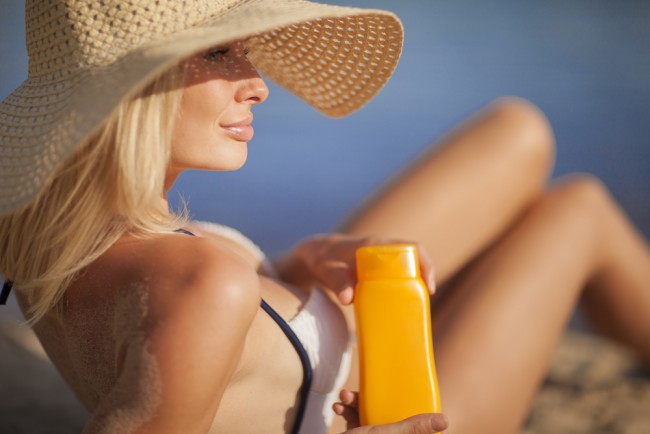Best and Worst Sun Protection Ingredients

With a recent study claiming that 80% of sunscreens on the market don’t work as effectively as claimed, and also contain an array of harmful ingredients, it is even harder than ever to choose the best form of sun protection for your skin. To help you to make a more informed decision, OROGOLD reviews the best and the worst sun protection ingredients out there.
Best Ingredients:
Titanium Dioxide
Titanium dioxide is a natural mineral that provides both UVA and UVB protection. It is known to be extremely gentle on the skin, and is a recommended sunscreen ingredient for those who have sensitive or sensitized skin. Rather than penetrating the skin and entering the body, titanium dioxide sits on the surface of the skin and reflects the UV rays away, giving you enough protection without any effect on your skin cells.
Zinc Oxide
Like titanium dioxide, zinc oxide doesn’t penetrate the skin, and reflects UV rays away. One of the safest ingredients to protect the skin from the sun, zinc oxide also helps to heal the skin, as well as reducing the tenderness that can arise from too much sun exposure.
Mexoryl SX or Emcapsule
Although Mexoryl SX has been available on the European market since 1991, and has very few safety concerns, it still has not been FDA approved, making it hard to find in the US. However, if you are able to find a sunscreen that contains it, OROGOLD recommends ensuring that titanium dioxide and avobenzone are also on the ingredient list, as it is this combination of ingredients that makes the Mexoryl SX work to its full potential.
Worst Ingredients:
Oxybenzone
Oxybenzone is used in about 80% of sun protection products, but its effects on the body are extremely worrying. Oxybenzone penetrates into the skin, and can quickly cause a spreading eczema-like allergic reaction. After being absorbed by the skin, oxybenzone soon makes its way into the bloodstream, where it mimics estrogen and throws hormones off balance. Studies have shown that around 97% of Americans have oxybenzone in their bodies, so OROGOLD strongly stresses the importance of avoiding products that contain this.
Retinyl Palmitate
A form of vitamin A, retinyl palmitate is a great antioxidant when it comes to anti-aging and repairing existing UV damage. However, when retinyl palmitate is directly exposed to the sun, it breaks down and produces free radicals, which are extremely destructive and toxic to the cells in the body, damaging DNA and causing cancer. FDA studies have even shown that, when applied to the skin prior to sun exposure, retinyl palmitate can speed up the development of malignant cells and skin tumors. However, OROGOLD wants to stress that retinyl palmitate is still a great anti-aging ingredient, and is perfectly safe to use in your night time skin care routine.
The fact that so many sun protection products contain harmful ingredients is quite worrying. However, by reading up on the different ingredients that they contain, you will be better able to protect your skin and body from any damage.

